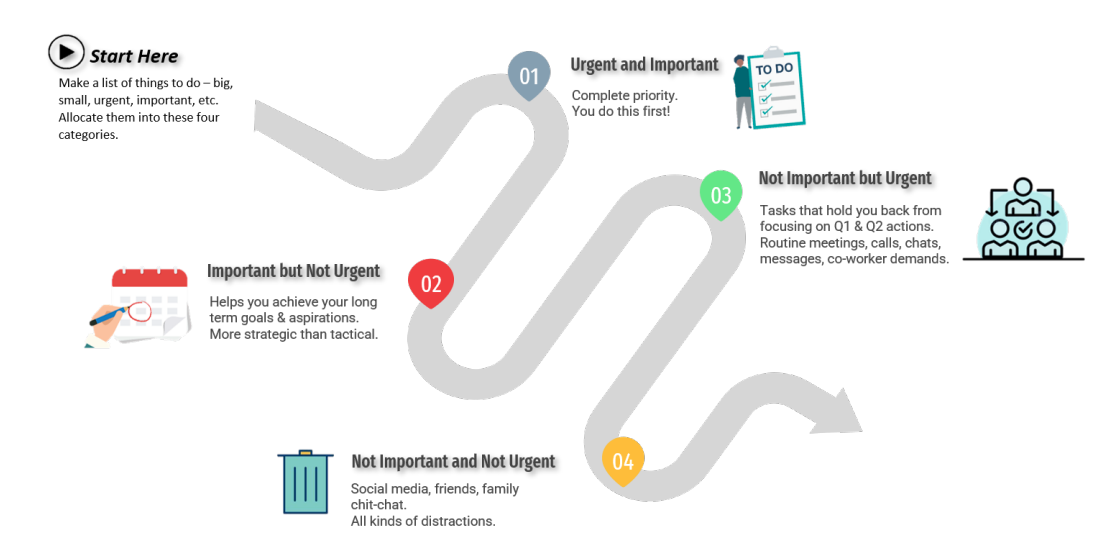Urgent & Important
UI Matrix
You have more things to do than you have time to do them. This is a perennial problem and one that has no easy answer. I would love to know how you decide which one gets done first and which ones come later. More likely than not, you decide this quite irrationally (remember: You are irrational).
Let’s go through your typical day. You wake up to some messages, address the urgent ones, go about your morning routine (I hope there’s some workout getting done before your workday begins) and then get down to work. I guess that emails, work messages, and chats are the first things that take up your time. And work mails have a persistent habit of being neverending. Where does that leave you time for tasks important to your long term goals and other urgent matters? Before you realise you are scrambling to get all essential things done, catching up with colleagues, zoom calls and the likes. By the time your workday ends, you are left wondering what you achieved in the day. Is there a better way to manage your day and time? Yes, but only if you decide your priorities smartly. Let me introduce you (or reintroduce, if you have heard about it earlier) to the Urgent-Important (UI) Matrix, also referred to as Eisenhower Matrix, which I use and hope that it comes to your assistance as well.
“The important thing is to know what is important”
There are important things - those that make a critical difference to your life, career, business, and investments - that usually play out in the long run and hence have no material impact on a day to day basis. Then there are urgent things like replying to customers, suppliers, boss; finishing the presentation or excel worksheet before the scheduled meeting in the day. We decide before the day begins about what’s important, and what’s urgent and the overlaps using the simple UI matrix: DO IT is where you have to focus, no matter what. JUST DO IT is the motto here. Unfortunately, life has a way of springing surprises and laying waste to your best plans. There will be unexpected tasks that come your way and take up time from DO IT activities. Keep a buffer for such things. Then you move to SCHEDULE IT, where you handle the important but not so urgent tasks. You have scheduled these tasks for after you finish managing DO IT. Keep a cushion here, too - believe me, you will need it. After filling in SCHEDULE IT, move to DELEGATE IT, which are urgent tasks but not important to you. You are best served by delegating these to team members or others for whom these are more urgent or important. DELETE IT is simply all sort of distraction which you will do well by totally ignoring or sending them to the ‘bin’.
“What is important is seldom urgent and what is urgent is seldom important ”
Here are some tips on how to practically use this matrix:
Keep a list of things to do and keep updating and revising it daily. This list is a mix of your long term important goals as well as near term tasks.
First, filter out the ones you think belong to DELETE IT. Tasks that don’t matter and are neither important nor urgent. There’s no place for such clutter in your life. Fill out the other three quadrants with the tasks you have listed down.
Block off about 2 hours of your most productive time of the day for DO IT & SCHEDULE IT tasks. For me, these 2 hours are the first thing in the morning, but I know enough folks with different times of the day as their super-productive hours.
Check your messaging & chat apps only once an hour. This is really critical. Trust me, the world can survive without you available on call 24X7. In case of an armageddon, folks can reach you using an age-old invention called the phone (in its latest avatar, of course). There is no need to worry about that.
Keep it this simple and see how it changes your productivity levels, time management and decision making. I would love for you to follow this for a few days and share your experiences.



